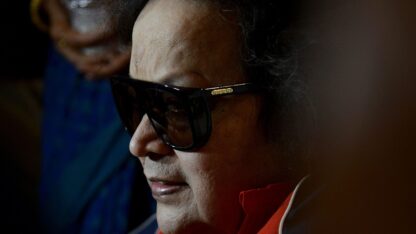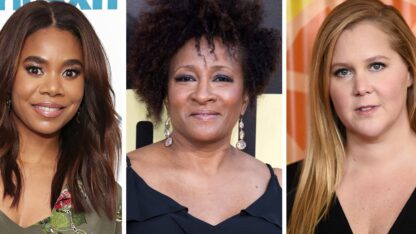Decades before Art Spiegelman’s “Maus,” “Persepolis” by Marjane Satrapi and “March” by Congressman John Lewis, the first graphic novel was created in 1943 by a young German artist named Charlotte Salomon. Salomon had produced a stunningly prolific collection of biographical paintings by the time she was killed at Auschwitz at 26, along with her unborn child. Her tragic life is the subject of an animated film, screening online now as part of the Atlanta Jewish Film Festival. Julia Rosenberg is the producer of “Charlotte,” the animated documentary capturing the story of these paintings, and also directed the all-star cast of voices in the film. She joined “City Lights” host Lois Reitzes via Zoom to talk about the brilliant unsung artist who inspired her.
Interview highlights:
An artistic luminary demanding discovery:
“She was the most prolific artist of the Shoah, and yet no one really knows about her,” said Rosenberg. “Those of us that do are fiercely attached to her story and her work. But I first saw the work mounted in 1998, and it occasionally does get mounted and travel, but it’s shockingly poorly known.”
“I was given a collection of her work, the collection of the 1300 paintings called ‘Life? or Theatre?’ for my thirteenth birthday, and it immediately struck a chord with me, so much so that as the years went on, every time I would fall in love, I would make a present of this book to the man in question to say, ‘This is the most important thing in the world to me. Here, you must have a copy.’”
Bright moments in the tragically brief life of Charlotte Salomon:
“Charlotte was part of an upper-middle-class Jewish family in Berlin…. Charlotte had a sort of charmed life until her mother died when Charlotte was eight years old, and then her father remarries a celebrated opera singer,” recounted Rosenberg. “Einstein would come by and play, apparently, play the violin, and it was a gathering place for artists and intellectuals.”
“She left [Germany] not long after Kristallnacht, through the guise of a temporary Visa allowing her to take care of her grandparents. Her grandparents had moved to the south of France and were given refuge in this beautiful villa in which Villefranche-sur-Mer… by this astounding American woman named Autilly Moore, and they lived there along with a bunch of Jewish children whom Autilly was also providing refuge for.”
“Autilly is a great lover of the arts, and so Autilly provides her with a studio, paints, paper, and Charlotte really, in many ways, begins to blossom despite some troubling family dynamics. And she adores the light, like many other artists have in the past, and can spend real-time painting and thinking about art.”
How Rosenberg was called to create her first animated film:
“The thought came into my head that Charlotte Salomon drew her life story. So I needed to produce an animated, therefore drawn version of her story as well, and I didn’t interrogate the thought. I just put my head down and plowed forward for ten years until the film was finished.”
“The process of animation is vastly different from live-action,” said Rosenberg. “Here’s one little tidbit to give you an idea. You create storyboards for the film, and then you edit the storyboards together, and it is that edited storyboard film, in a way called an animatic, that you lock picture on, and then you go ahead and animate it. So you edit the film before you animate the film.”
The 2022 Atlanta Jewish Film Festival takes place entirely online this year, with twelve days of streaming along with virtual events. “Charlotte” is screening now through Feb. 27. More information is available at https://ajff.org/film/charlotte.










